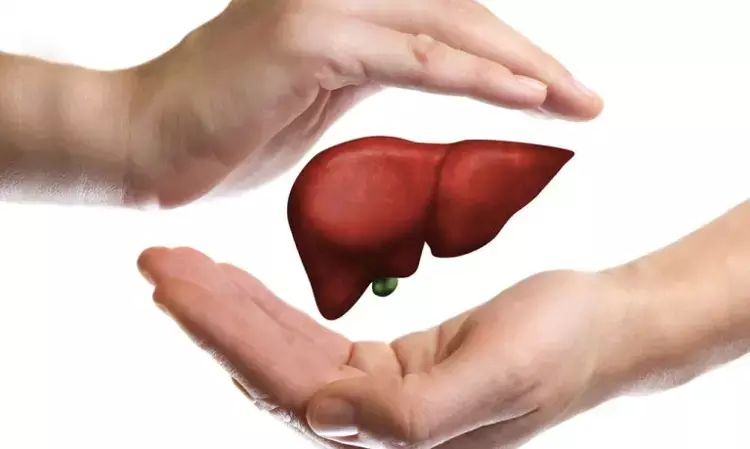- Home
- Medical news & Guidelines
- Anesthesiology
- Cardiology and CTVS
- Critical Care
- Dentistry
- Dermatology
- Diabetes and Endocrinology
- ENT
- Gastroenterology
- Medicine
- Nephrology
- Neurology
- Obstretics-Gynaecology
- Oncology
- Ophthalmology
- Orthopaedics
- Pediatrics-Neonatology
- Psychiatry
- Pulmonology
- Radiology
- Surgery
- Urology
- Laboratory Medicine
- Diet
- Nursing
- Paramedical
- Physiotherapy
- Health news
- Fact Check
- Bone Health Fact Check
- Brain Health Fact Check
- Cancer Related Fact Check
- Child Care Fact Check
- Dental and oral health fact check
- Diabetes and metabolic health fact check
- Diet and Nutrition Fact Check
- Eye and ENT Care Fact Check
- Fitness fact check
- Gut health fact check
- Heart health fact check
- Kidney health fact check
- Medical education fact check
- Men's health fact check
- Respiratory fact check
- Skin and hair care fact check
- Vaccine and Immunization fact check
- Women's health fact check
- AYUSH
- State News
- Andaman and Nicobar Islands
- Andhra Pradesh
- Arunachal Pradesh
- Assam
- Bihar
- Chandigarh
- Chattisgarh
- Dadra and Nagar Haveli
- Daman and Diu
- Delhi
- Goa
- Gujarat
- Haryana
- Himachal Pradesh
- Jammu & Kashmir
- Jharkhand
- Karnataka
- Kerala
- Ladakh
- Lakshadweep
- Madhya Pradesh
- Maharashtra
- Manipur
- Meghalaya
- Mizoram
- Nagaland
- Odisha
- Puducherry
- Punjab
- Rajasthan
- Sikkim
- Tamil Nadu
- Telangana
- Tripura
- Uttar Pradesh
- Uttrakhand
- West Bengal
- Medical Education
- Industry
Primary norfloxacin prophylaxis prevents infections in liver failure patients, study finds

Hyderabad: In a new study it was found that in individuals with acute-on-chronic liver failure (ACLF), primary norfloxacin prophylaxis effectively avoids bacterial infections. In hospitalized cirrhotic patients with low ascitic fluid protein concentrations, norfloxacin can help avoid infections. It also works to keep spontaneous bacterial peritonitis from recurring. The findings of this study were published in The American Journal of Gastroenterology on January 17th, 2022.
Anand V. Kulkarni and colleagues conducted this study to assess the role of prophylactic norfloxacin in preventing bacterial infections and its impact on transplant-free survival (TFS) in patients with acute-on-chronic liver failure who met the Asian Pacific Association for the Study of the Liver criteria.
In this trial, patients with ACLF were given either oral norfloxacin 400 mg or a matching placebo once daily for 30 days. The primary objective was the occurrence of bacterial infections at days 30 and 90, whereas the secondary endpoint was TFS at days 30 and 90.
The results of this study stated as follow:
1. There were a total of 143 patients in the study (72 in the norfloxacin and 71 in the placebo groups).
2. The two groups had similar baseline demographics, biochemical characteristics, and severity levels.
3. In the norfloxacin and placebo groups, respectively, the incidence of bacterial infections at day 30 was 18.1% and 33.8%, while the incidence of bacterial infections at day 90 was 46% and 62%.
4. TFS at day 30 was 77.8% in the norfloxacin group and 64.8% in the placebo group, according to Kaplan-Meier analysis. TFS was 58.3% and 43.7% at day 90, respectively.
5. Multidrug-resistant organisms were responsible for 33% of illnesses.
6. The norfloxacin group had a higher rate of concurrent candiduria (25%) than the placebo group (2.63% ).
In conclusion, the findings of this study show the efficiency of norfloxacin in bacterial contamination and should be encouraged to be used as a frequent way of treatment.
Reference:
Kulkarni AV, Tirumalle S, Premkumar M, Kumar K, Fatima S, Rapole B, Simhadri V, Gora BA, Sasikala M, Gujjarlapudi D, Yelamanchili S, Sharma M, Gupta R, Rao PN, Reddy DN. Primary Norfloxacin Prophylaxis for APASL-Defined Acute-on-Chronic Liver Failure: A Placebo-Controlled Double-Blind Randomized Trial. Am J Gastroenterol. 2022 Jan 17. doi:10.14309/ajg.0000000000001611. Epub ahead of print. PMID: 35041634.
Medical Dialogues consists of a team of passionate medical/scientific writers, led by doctors and healthcare researchers. Our team efforts to bring you updated and timely news about the important happenings of the medical and healthcare sector. Our editorial team can be reached at editorial@medicaldialogues.in.
Dr Kamal Kant Kohli-MBBS, DTCD- a chest specialist with more than 30 years of practice and a flair for writing clinical articles, Dr Kamal Kant Kohli joined Medical Dialogues as a Chief Editor of Medical News. Besides writing articles, as an editor, he proofreads and verifies all the medical content published on Medical Dialogues including those coming from journals, studies,medical conferences,guidelines etc. Email: drkohli@medicaldialogues.in. Contact no. 011-43720751


